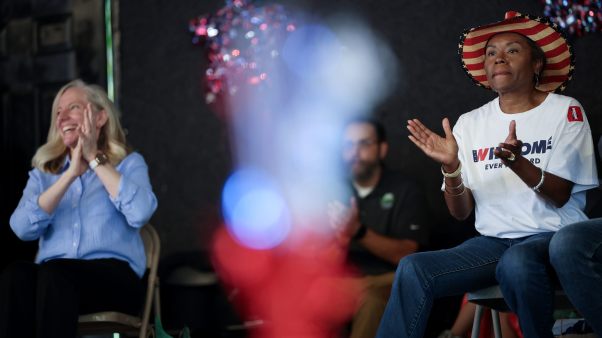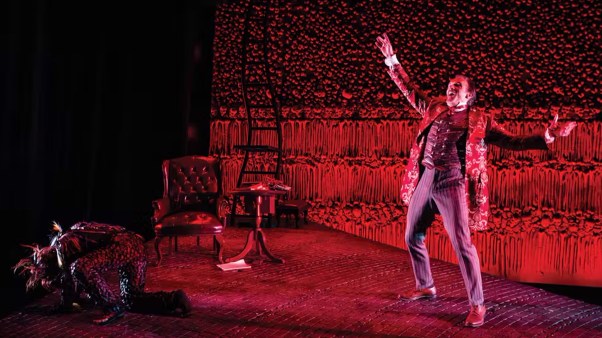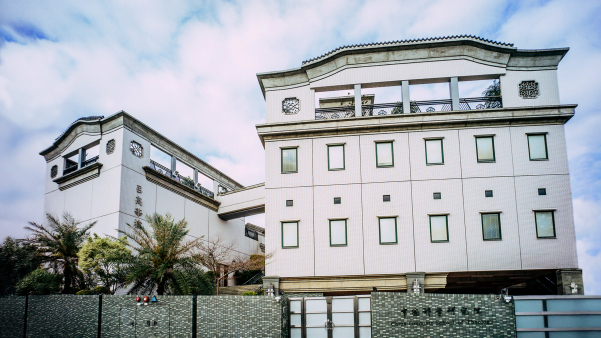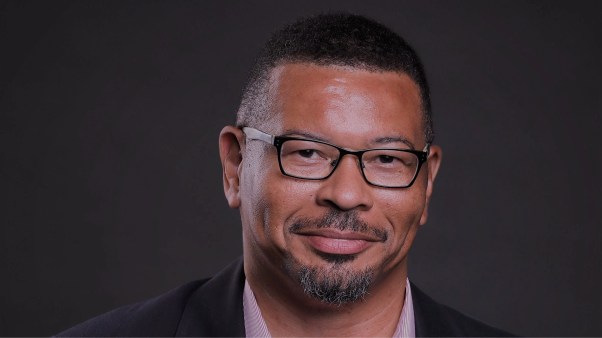In the aftermath of Wounded Knee and other recent Indian confrontations, a widespread new consciousness is developing toward Christian work among the original Americans.
Most Indians seem to repudiate the violent tactics of the American Indian Movement, as well as such criticisms of Christians as those in the book God Is Red by the scholarly Vine Deloria, Jr. If nothing else, however, the resultant publicity has helped many more white Americans learn of the red man’s legitimate grievances against both church and state.
In the religious realm, a few radicals are asking whether white Christians have any right to tamper with traditional Indian beliefs. Christian Indians generally scoff at such suggestions, contending that there is no common religion among Indians anyway. What Christian Indians would like is to see their leadership roles in the church win greater respect and encouragement from white Christians.
“The secret of effective Indian work is Indians working among Indians,” says minister Thomas Francis, a Cree from Saskatchewan who is secretary of the Native Evangelical Fellowship of Canada. Missionaries are usually reluctant to turn over the reins to those whom they have evangelized. Now in North American Indian work they are being pushed to do this as never before.
Christian Indian leaders also are saying that a new evangelistic approach is long overdue. The native Americans have been preached to by white Christians for more than 350 years, and some experts feel that evangelistic methodology needs to be updated. A Christian missionary anthropologist asks, “Why … have the Indians been so resistant to Christianity when something like the peyote cult [peyote is a cactus that yields a hallucinatory drug] has grown so rapidly?”
A report prepared for the Missions Advanced Research and Communication Center last November concluded that mission work among Indians has been directed at the lowest social level and at the leadership but has often neglected the “innovative middle.” The report also cited other observers’ comments on the competition among the many Christian agencies engaged in Indian work. One researcher quoted by the report called the Navahos the “most missionaried people in the world.” Difficulties in relating to young people and in conducting evangelism within the framework of Indian culture, partly because of the dearth of Indian-language translations of Christian literature, were cited also.
The most memorable work among Indians is said to have been that of John Eliot, who dedicated his life to the cause in 1646 and saw some 4,000 conversions in thirty years. The converts were gathered into twenty-four congregations, some with ordained Indian ministers. The first Bible printed in America in any language was the one Eliot produced in a translation for the Massachusetts Algonkian Indians.
The most extensive of the ministries among Indians in recent years has been that of the United Methodists. They have an all-Indian annual conference with 110 churches. Latest membership figures (for the end of 1973) showed a membership of 11,443, a 10 per cent increase over the previous year. There are other Indian Methodist churches that do not belong to that conference, as well as individual Indians who are members of Methodist churches not predominantly Indian. Best known of the Methodists with Indian blood is Oral Roberts.
Presbyterians and Baptists too have substantial Indian ministries, as do the Assemblies of God and the Nazarenes. The largest independent work seems to be that of the North Canada Evangelical Mission, but hard figures that would enable accurate comparisons have not yet been compiled. A prominent Indian mission director suggests that efficiency might be greatly increased if a relatively simple directory were compiled. There may now be considerable duplication of efforts, he says, because of lack of awareness of what others are doing.
Currently about 800,000 Indians are enrolled in reservations in the United States, and more than 350,000 in Canada.1In the United States, an Indian is enrolled on a reservation on the basis of his mother’s tribe; in Canada, on the basis of his father’s. They are spread among about 250 tribes. Several hundred reservations are scattered throughout the United States. The largest occupied by the largest tribe, the 137,000 Navahos. Their sixteen-million acres of arid land (an area about the size of West Virginia) is spread across parts of Arizona, New Mexico, and Utah. The Indian population is increasing steadily. It is said to be America’s fastest growing ethnic group, with a birth rate as high as India’s.
General Director H. Thomas Claus of the American Indian Crusade estimates that between 3 and 5 per cent of American Indians could be called evangelical Christians. Others think that about half regard themselves as at least nominally Christian, and this assumption is often part of the problem in evangelistic work. Says Ted Standing Elk, a Mennonite Brethren evangelist from Porcupine, South Dakota: “We are not dealing with heathen. They claim they are Christian.”
Claus says resistance to the Gospel is also attributable to the fact that Indian Christians are often outcasts in their pueblos. Many do not want to give up their old ways, says Jerry Yellow Hawk, a Sioux minister from Eagle Butte, South Dakota. “They just find it very hard to change over.”
Influential evangelical Indians have recently recognized the great need for pooling their ideas on such problems. As a result, a three-day leadership and evangelism conference was held in Albuquerque in March, and a continuing organization is to be constituted in California in June. Claus was named chairman of the organizing committee. Educational development is a key objective.
There are six Indian Bible schools operating in the United States, but the recognition from authorities that would bring more subsidies and scholarships has been hard to get. Lack of adequate preparation in secondary schools is probably the major hindrance to the Bible schools’ achieving higher academic levels. The secondary-school problem, in turn, is traceable at least in part to language deficiences. There are about 250 surviving languages among the Indians, according to Dr. Thomas, and only about 100 of these are in writing. Wycliffe Bible Translators are at work at several levels in trying to break down language barriers.
Despite the obstacles, some 30,000 American Indian young people are currently enrolled in U. S. colleges. Bacone College, a junior college in Muskogee, Oklahoma, operating under the auspices of American Baptists, has been pioneering in Indian higher education. It has 575 students this year, 78 per cent of them American Indian.
Robert Hardgrave, principal of the Southwestern School of Missions in Flagstaff, Arizona, warns against making too many generalizations about Indian attitudes toward education and religion. He points out that there are marked differences between tribes. He also reports that the multiplicity of Christian denominations confuses Indians, and that some cults are working feverishly to reach Indians. Hardgrave is a former chemical engineer who for seventeen years served as pastor of the First American Indian Church of Los Angeles. He is not an Indian.
Social problems on Indian reservations, much publicized but little corrected, are also a basic concern for Indian evangelical leaders. Nazarene Erwin Patricio, a Papago Indian who is chaplain of the Southwest Indian School in Peoria, Arizona, contends that alcohol is still the number-one problem on reservations. Other major problems concern educational opportunity and ample health care. About half a million Indians are eligible for free federal medical help, but they usually have to go a long way for treatment, and the hospitals and clinics operated by the Bureau of Indian Affairs do not get enough funding from Congress to update facilities and attract the needed number of doctors and nurses. The suicide rate among Indians, especially young people, is alarmingly high, say observers.
Another Nazarene, Kogee Thomas, a Creek Indian who teaches at UCLA and is associate director of its American Indian Culture and Research Center, gave the Albuquerque meeting a thorough briefing on the obstacles to economic development among Indians. She noted that the individual Indian “is often torn between a desire to remain with his diminishing land in an effort to recover the essence of his culture and a temptation to adapt to the non-reservation world in an effort to increase his material well-being.” The average Indian income is said to be $1,500 a year, and unemployment hovers around 40 per cent.
Christian laymen in some tribes are taking the initiative in tackling the big social problems. Among these is Peter MacDonald, who is beginning his second four-year term as chairman of the Navaho tribe.
Appreciation for Indian ways is growing among American whites, thanks primarily to the recent popularity of sand paintings and silver-and-turquoise jewelry crafted by Indians. Indian evangelicals hope that this kind of respect for the Indian ethos will bring whites and reds closer together and contribute to mutual understanding. If that happens, the cause of the Gospel is bound to be enhanced.
DAVID KUCHARSKY
WORKING WITHOUT WATCHING
Many of the Bloomington (Indiana) Gospel Tabernacle’s members are employed at the big RCA television plant in town. Yet a lot of them refuse to watch TV themselves, and a number don’t have a set anywhere in the house, according to an Evangelical Press story.
“I am certain God would condemn me if I had a television in my home,” said Tabernacle member Fern Ropp. She and others believe TV is a tool of the devil.
Pastor Charles Benninghoff, 40, says there is “a complete moral breakdown in America today. Television programmining is in a large part responsible.”
Missouri Synod: Cooling Off
Schism may not occur in the Lutheran Church-Missouri Synod after all, say some of the leaders among the 300 participants in last month’s high-level LCMS theological convocation. The five-day convocation did not result in doctrinal consensus, but members of the opposing factions in the denomination’s doctrinal controversy said they did gain a better understanding of each others views, and they called for further talks.
LCMS president Jacob A. O. Preus seemed pleased with the outcome and said he might say something special at the denomination’s convention in July as a result of the convocation.
The convocation dealt with the authority of Scripture. Position papers were presented by theologians of both sides. These were discussed by reactors and in small-group meetings.
Inerrancy emerged as the key topic. Preus and his colleagues argued for it; the other side allowed for errors in the Bible (“its humanity”) but contended that errancy does not rob Scripture of its authority and power, a concept rejected by the conservatives.
Neither side seemed to be able to arrive at a mutually understood definition of the historical critical method of biblical interpretation, an important issue in the controversy. Advocates of errancy and non-literal interpretation of certain Bible passages rest their case on historical criticism.
The conservatives, who hold the positions of power in the LCMS, indicated they will not compromise “God’s truth” in order to achieve unity. Nevertheless, the convocation concluded on a hopeful note of reconciliation as most of the participants—including Preus and opposition leader John Tietjen—joined together in a communion service.
Earlier, the LCMS board of directors was told that relations with the LCMS-related churches in Brazil and Asia are much improved. Presidents of the Asian churches reported that Chairman Waldo Werning of the LCMS missions board and Hong Kong church leaders “have made peace with each other.” A disputed policy statement of the missions board has been set aside in favor of a joint policy study, said the presidents.
Thus for now, things seem to be cooling off a bit in the Missouri Synod.
Garbled press coverage of several recent developments contributed to unrest among LCMS members. Action at a January meeting of the faculty senate at 1,200-student Concordia Teachers College in River Forest, Illinois, was interpreted by a Chicago newspaper as a no-confidence vote for the administration. The faculty immediately issued a statement denying that the action was an attack against the administration or a no-confidence vote. It was instead an airing of the issues on the troubled campus, according to a source.
When Seminex, the seminary founded by anti-Preus dissidents, was voted as an associate member of the Association of Theological Schools, a United Press story indicated wrongly that Seminex was now accredited and could grant degrees.
Another news story said an Illinois court had upheld the legality of an arrangement by which Seminex degrees were granted through another Lutheran school. In reality, the matter has not yet reached the courts; the state’s Superintendent of Public Instruction said he saw no fraud in the arrangement.
Also, officials at Concordia Seminary in Springfield, Illinois, deny that any troubles on campus there stem from the denomination’s doctrinal controversy, as some news accounts implied.
Lost Cause
Apparently under pressure, the United Methodist Council on Youth Ministries no longer plans to ask the denomination’s legislating body next year to endorse the ordination of homosexuals, according to a Religious News Service story.
Instead, the youth agency will try to get the body to drop one sentence and a clause from a church statement adopted in 1972. The phrase puts the church on record as not condoning homosexual practice because of its incompatibility with Christian teaching. The sentence says the church does not recommend marriage between persons of the same sex.
Leaders of the youth agency, noting the vocal anti-gay reaction throughout the denomination, say privately they don’t expect their deletion proposal to survive pre-convention committee action.
The Saga Of St. Sava
A twelve-year-long church battle neared an end with a recent Illinois Supreme Court decision that is bound to disturb some church authorities in Yugoslavia. It all started in the early 1960s when the bishops of the Serbian Eastern Orthodox Church in Yugoslavia decided to split its American-Canadian Diocese into three new dioceses. This move was opposed by Bishop Dionisije Milivojevich of the American-Canadian diocese. He was already a storm center of controversy because of personal charges lodged against him by a number of American church members. In 1963 the Yugoslav bishops suspended him. The following year, without investigating the charges, they defrocked him.
Dionisije and his followers rejected both the restructuring and the defrocking, and they declared their diocese no longer was bound to the mother church in Yugoslavia. Near-riot conditions ensued in some of the churches as both sides contended bitterly for control of property and pulpits. Families were divided. Police had to quell disturbances. (Records show the denomination had 65,000 North American members and fifty-two churches in the late 1960s.)
The Illinois high court ruled that the Yugoslavia bishops had violated their church’s constitution in partitioning the American-Canadian Diocese and in the way they defrocked Dionisije. But, said the court, the diocese also erred in seceding from the mother church and is still bound to it.
Lower courts will use the opinion as a guideline in arriving at settlements. In effect, neither side has won, and in a number of cases the warring factions now may settle out of court. In the Cleveland suburb of Parma, where the St. Sava Serbian Orthodox church exchanged hands several times amid slugfests and shouting, the opposing groups agreed to split the $1 million worth of church property between them. The group loyal to the mother church—about 400 members—has first option on the church building and will be known as the St. Sava Serbian Orthodox Cathedral. The other group—about 800 in number—will call itself the St. Sava Serbian Eastern Orthodox Church.
St. Sava was dedicated twice in 1963: once by Dionisije and once by the three new bishops appointed by the Yugoslav hierarchy. A long, unpleasant chapter in its history is concluded at last.
Anglicans: Will Women Win?
Parishioners of the Anglican Church of the Ascension in London formally petitioned Bishop Mervyn Stockwood of Woolwich, known as a controversial “progressive,” to ordain to the priesthood Elsie Baker, a deaconess who has served the parish for thirty-three years. It is the first request for ordination of a woman to the priesthood in Church of England history. Stockwood was not available for immediate comment; it was believed he will not act on the petition until the denomination agrees to the ordination of women. Assistant bishop David Sheppard, an evangelical, voiced approval of women’s ordination.
The topic has been a subject of study throughout the Church of England, and each diocese has voted on it in a straw poll. The results of the voting are to be reported to the July session of the church’s General Synod. That meeting may determine in which direction the church will move on the issue.
News sources quote an unnamed Anglican authority as saying that forty-one of forty-three diocesan synods see no important barriers to women’s ordination.
Religion In Transit
More suicide attempts were preceded by a serious quarrel with a spouse than by any other stress situation, according to a recent medical study. Also high on the list: serious personal or family illnesses. The majority of suicide attempts were by white females under age 30, mostly through drug overdoses.
A 24-year-old Camden, New Jersey, man was indicted for murder in the deaths of twin fetuses. He wounded a young woman seven months pregnant in a hold-up attempt. The fetuses were removed but died within fifteen hours. “We will have to prove in court that they were living persons,” says the county prosecutor. Some observers believe the case could force the Supreme Court to define more precisely the rights of the unborn and when life begins.
The National Religious Broadcasters organization will move its headquarters from Morristown, New Jersey, to Washington, D. C.
A Southern Baptist Convention committee, instructed to study the possibility of a name change for the 12.5-million-member SBC, will recommend against a change at next month’s annual meeting. Reasons: other groups might grab the SBC name; no consensus on a new name; the difficulties in communicating the change and in changing all the records and published materials.
Melodyland School of Theology, a 500-student charismatic-oriented school in Anaheim, California, has formed an Ecumenical Research Academy and an Advanced Center for Theological Studies. The latter will offer short terms of graduate study. Both ERA and ACTS are to be housed in a proposed $9 million facility.
The chief planning and coordinating body of the United Presbyterian Church rejected a proposal to establish a separate overseas mission agency. It also rejected a list of evangelical theological affirmations as standards for mission work but called for a denomination-wide study of the meaning of mission. The affirmations and the request for a UPC mission agency for “world evangelization” were made last year by Presbyterians United for Biblical Concerns, an evangelical lobby. Evangelicals are now talking about starting their own mission unit.
For “various” but unspecified reasons, the Joint Washington Office for Social Concern, representing the Unitarian Universalist Association, American Humanist Association, and American Ethical Union, will close June 30 after more than five years of lobbying in the nation’s capital.
A Harris opinion poll shows that religion is “very important” for 71 per cent of Americans 65 and older. The figure is only 34 per cent for persons 18–24 but increases for each age group. Attendance at church and synagogue services is highest among those 55 and older.
The American Board of Missions to the Jews will launch an “evangelistic blitz” of one-minute spots six times daily on the 675-station Mutual Broadcasting System from May 19 through May 30, according to ABMJ sources.
Western Maryland College in Westminster, Maryland, severed its affiliation with the United Methodist Church. College officials blame a parochaid lawsuit by Americans United that has tied up more than $1 million of state aid. Of 1,288 undergraduates, 276 are Methodists. An earlier suit by A.U. resulted in the loss of $500,000 of state funding for a new building. Elsewhere, North Carolina Wesleyan College’s request to be taken into the state’s university system was denied. The United Methodist school, $3.5 million in debt, may be forced to close.
Unless the twelve-year-old Journal of Ecumenical Studies, a Temple University publication in Philadelphia, can come up with nearly $10,000 in additional funding for next year, it will cease publication, according to a spokesman for the 2,500-subscriber quarterly journal.
First Baptist Church of Hammond, Indiana, hosted 3,194 pastors and lay workers at its twelfth annual Pastors’ School, according to Pastor Jack Hyles. On March 16, a total of 30,570 attended Sunday school in shifts at the church. A world record, says Hyles.
The Canadian Supreme Court ruled that the nation’s five-year-old abortion law permits abortions at licensed hospitals by doctors only when the mother’s life or health is endangered.
DEATH
CHARLES BRANDON BOOTH, 87, former commander-in-chief of the Volunteers of America relief and rehabilitation organization and grandson of William Booth, founder of the Salvation Army; in La Mesa, California.
Personalia
Author-journalist Russell T. Hitt, 69, retired this month as editor of Eternity magazine and as executive director of the Evangelical Foundation, which sponsors the magazine and the “Bible Study Hour” radio broadcast.
Colonel Orris E. Kelly, 48, a United Methodist clergyman and Garrett Seminary graduate, was named to succeed retiring Gerhardt W. Hyatt as U. S. Army chief of chaplains. With the new job comes promotion to major general. Two thoroughgoing evangelicals were among the three final candidates for the post, according to chaplaincy sources.
William O. Rieke, 43, an executive of the University of Kansas Medical Center, will become president of Pacific Lutheran University, an American Lutheran Church school in Tacoma, Washington.










